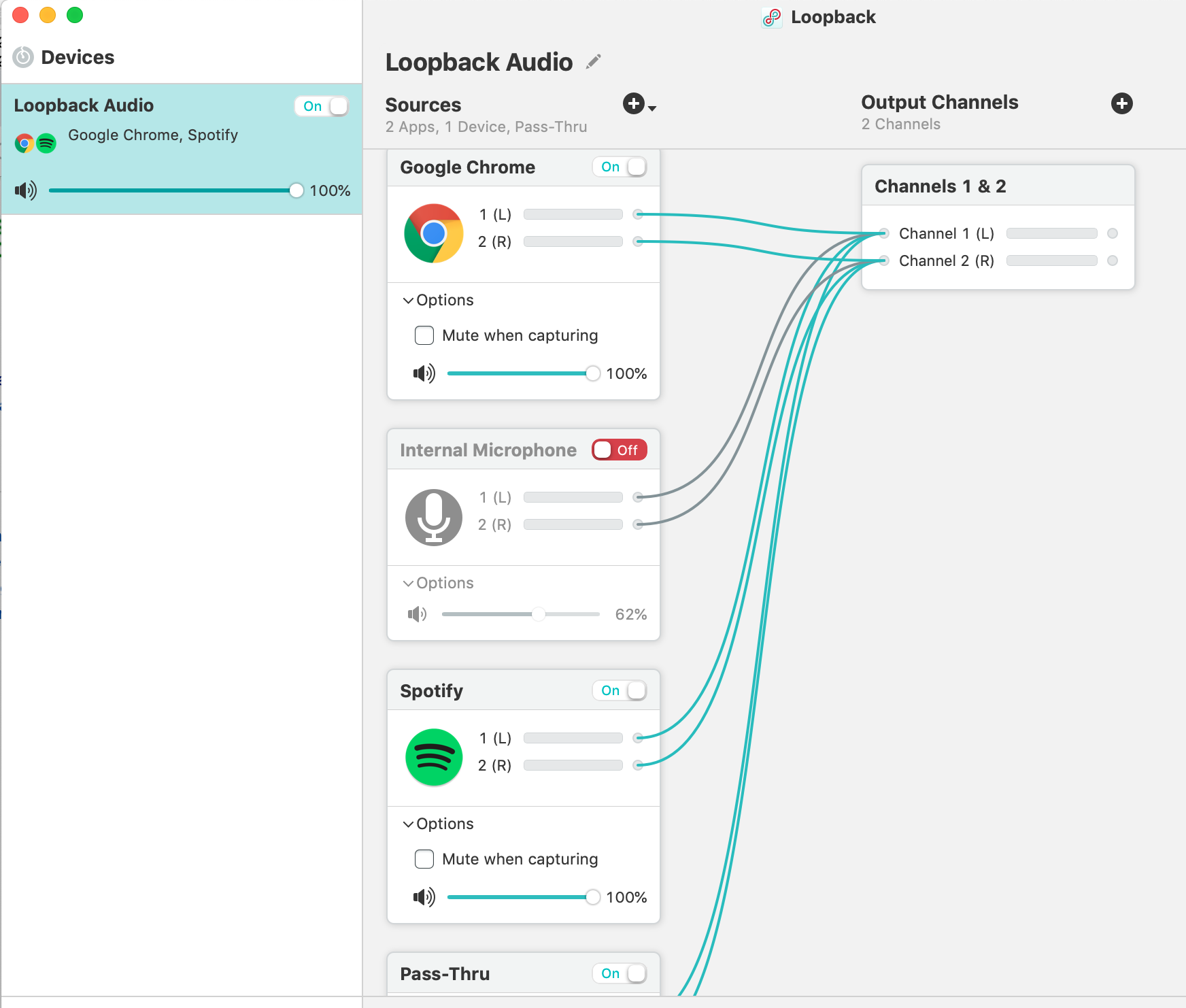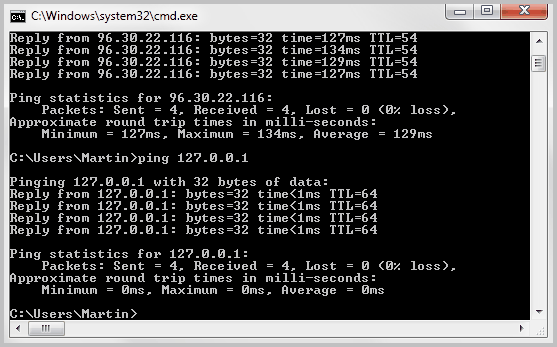

One will be your IP address the other will be the loopback address. You can see all this by going to a command prompt and typing "route print." If you have just one network card, you will still see two interfaces. This would tell you that your network card is working and that you are able to route traffic. If you wanted to test the network card, you would ping the actual address of the network card, then the default gateway. Pinging the loopback address goes down to layer 2, but it doesn't actually send anything out. To test TCP/IP, you only have to go down to layer 3. The network card operates at layers 1 and 2. To send packets to the Internet, you go down the layers to layer 1 before it gets out onto the wire. If you were to study the TCP/IP protocol, you would eventually encounter the OSI model, which consists of layers. If you were to ping 127.34.2.87, it would still come back as a loopback. The IP address range 127.0.0.1/8 is completely registered for loopback purposes. 127.0.0.1 is also called a loopback address because it is connected to the local system, not on a remote system. In fact 127 anything is a loopback address. The ping ICMP request will reply with successfully if there is no problem with the operating system network stack.
#Loopback ping windows#
The loopback address 127.0.0.1 is identified by Windows (or whatever operating system you use) as a loopback address. There are week-long classes on the subject. Although some people believe that there are only two protocols involved, there are actually quite a few. The agreed upon protocol for the Internet is a suite of protocols commonly called Transmission Control Protocol / Internet Protocol (TCP/IP). The protocol is a set of rules that everyone who wants to communicate with each other, must follow. The interface is the network card, whether it be a network interface card, a wireless radio, an IEEE 1394 (FireWire) port, or a USB port with an adapter. The client is called "Client for Microsoft Networks." This is the default. With all of this in mind, the loopback address is a simple but critical part of the network engineer’s toolkit.In order to access the Internet, you need three things: a client, an interface, and a protocol. Users can also implement stateless firewall filters in a loopback interface and loopback address use case. It's a universal and constant part of the availability of systems to evaluate their connections. Even in various sorts of system failures or network downtime, the loopback interface is still in place, allowing engineers to verify whether a given device connection is solvent or not.Īnother key benefit is that the loopback address never changes depending on IP setups. One of the biggest benefits of using the loopback address is that it is “always up” and available. The benefits of using a loopback address to ping a given network device are useful in understanding how this kind of implementation works. The standard domain name for the address is localhost.” Benefits of Using a Loopback Address The most commonly used IP address on the loopback network is 127.0.0.1 for IPv4 and ::1 for IPv6. Any traffic that a computer program sends on the loopback network is addressed to the same computer. Juniper Networks describes some of the corresponding change this way: “Most IP implementations support a loopback interface (lo0) to represent the loopback facility. The syntax of the new loopback address in IPv6 is simpler: it's ::1. In the old IPv4 system, the loopback address was 127.0. In recent years, the Internet Protocol system has been retrenched to allow for a greater number of IP addresses. The loopback address also looks different in IPv4 than it does in IPv6. Different Loopback Addresses for IPv4 and IPv6 Domain Addressing Systems The autonomous system, as its own internal network, has its own protocols, to which a loopback address test can be a remedy for certain problems with network verification. The loopback address is also useful in Border Gateway Protocol scenarios that connect routers through inter-domain routing between autonomous systems. Other kinds of testing look at how routers are set up and how they talk to each other, and what can be done to evaluate the functionality of a specific part of a network. For example, a paperclip test will utilize terminal emulator application methodology to verify some type of network connectivity.

The loopback interface refers to the overall system by which network engineers can self-reference a device, or “ping” a device by sending its data packets back to itself.Ī loopback interface helps to solve some router problems and implement some kinds of testing.

The loopback address is a vital component of what IT experts call a loopback interface. Techopedia Explains Loopback Address The Loopback Interface


 0 kommentar(er)
0 kommentar(er)
